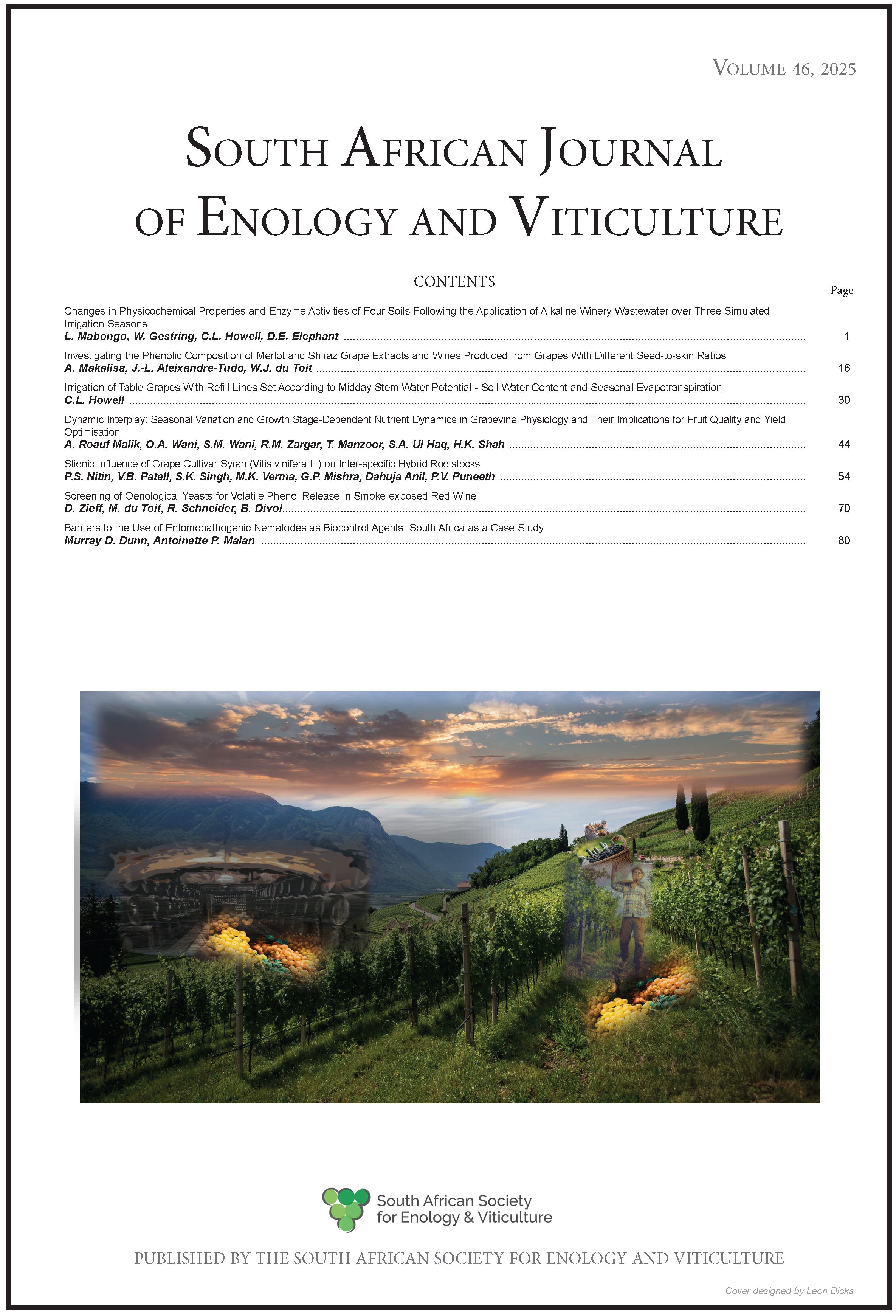Barriers to the Use of Entomopathogenic Nematodes as Biocontrol Agents: South Africa as a Case Study
Barriers in using nematode biocontrol agents
DOI:
https://doi.org/10.21548/46-6964Abstract
Pesticides are synonymous with conventional agriculture, however in recent years, synthetic pesticides
have been scrutinised for environmental and human health-related toxicity. Biopesticides are a sustainable
alternative, with biopesticide technology promising to meet the market halfway by means of maintaining
the current agricultural economic structure, using input technologies, but sustainably, to promote
biodiversity and healthy ecosystem functioning. Biopesticides, which have the potential to mitigate the
impact of ecosystem collapse from intense agriculture and climate change, have received heavy investment
for product development. However, multiple barriers to biopesticide commercialisation are preventing
their widespread use in viticulture and other South African agricultural industries. A literature review
has established that the barriers can be simplified into three main categories: regulatory, commercial,
and educational. This review seeks to understand the barriers and why, after many years of research and
development and considerable investment, the South African biopesticide market is still only a fraction
of the size of the synthetic product market. Global research is considered, as the issue is not a solely
South African one, and multiple countries are facing similar barriers to achieving biopesticide commercial
success. Moreover, this review provides the context as to why, after almost 20 years of research and product
development, a locally produced entomopathogenic nematode biopesticide product is still unavailable to
South African growers, despite the high demand for such a product.
Downloads
Downloads
Published
Issue
Section
License
A copyright form will be e-mailed to the corresponding author when the manuscript has been accepted for publication.
In principle, the Author agrees to the following when he/she signes the copyright agreement:
I hereby assign to the SOUTH AFRICAN SOCIETY FOR ENOLOGY AND VITICULTURE (SASEV) the copyright of the text, tables, figures, supplementary material, illustrations and other information (the Material) submitted with the manuscript to be published in SOUTH AFRICAN JOURNAL OF ENOLOGY AND VITICULTURE (SAJEV) (the "Article"). The copyright becomes effective from the date the Article has been accepted for publication in SAJEV.
This is an open access journal, and the authors and journal should be properly acknowledged, when works are cited.
Author's may use the publishers version for teaching purposes, in books, theses, dissertations, conferences and conference papers.
A copy of the authors' publishers version may also be hosted on the following websites:
- Non-commercial personal webpage or blog.
- Institutional webpage.
- Authors Institutional Repository.
The following notice should accompany such a posting on the website: This is an electronic version of an article published in SAJEV, Volume XXX, number XXX, pages XXX - XXX, DOI. Authors should also supply a hyperlink to the original paper or indicate where the original paper (www.journals.ac.za/index.php/sajev/) may be found.
Authors publishers version, affiliated with the Stellenbosch University will be automatically deposited in the University's Institutional Repository SUNScholar.
Articles as a whole, may not be re-published with another journal.
The following license applies:
Attribution CC BY-NC-ND 4.0

